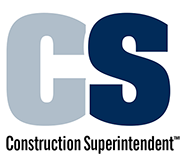
By Erik Webb
One of the challenges faced by construction superintendents is site security and equipment theft, which can lead to financial loss, project delays and safety hazards. According to the American Rental Association, loss due to equipment theft is estimated at $100 million annually. Equipment that is easy to load on a trailer, such as telehandlers or scissor lifts, are some of the most often targeted. Beyond the direct financial impact, there are indirect costs associated with increased insurance rates and delayed timelines.
The responsibility for reporting and recovery typically involves multiple parties, including the site superintendent, in addition to the subcontractors. Superintendents are usually responsible for coordinating the initial response, gathering information to report to the authorities and remedying site security.
The following three considerations can go a long way to help combat theft and aid in recovery.
1. An ounce of prevention
An obvious way to protect equipment from theft is to lock it up. Fencing, proper lighting and surveillance cameras all can help prevent access to equipment and tools or deter would-be thieves. Likewise, physical barriers that protect smaller components such as batteries — a common target for thieves — can help prevent theft.
Some scissor lifts, for example, can be equipped with a battery guard — a simple bar that fits diagonally across the scissor lifts’ batteries and keeps someone from simply snipping the battery cables and walking away with them. However, it’s not always possible to physically restrict unauthorized access to a jobsite. Using general site security methods in conjunction with current and emerging digital technologies, such as telematics, is likely the key to preventing theft prevention, minimizing its impact and assisting equipment recovery.
According to Global Market Insights, the global telematics market for tracking construction equipment is projected to grow at a compound annual growth rate of more than 9.8% from 2024 to 2032.
2. Digital tools of the trade
In terms of digital tools, telematics solutions can provide connectivity to control and restrict access to equipment.
In addition, geofencing can improve the ability to monitor a machine’s location within a defined area; if the asset leaves the area or is used outside of pre-set hours, alerts can be sent to key individuals.
Also, GPS tracking can help contractors pinpoint the location of equipment. This information can be shared with authorities for recovery or, in the case of large jobsites, give the rental company the ability to help the customer locate a machine that was moved to another part of the site.
3. Anticipating jobsites of the future
Telematics and other remote management tools are widely available today. But as technology continues to evolve, it has the potential to bring even greater security to the jobsite of the future. For example, RFID tags could help catalog and track all tools and materials. When combined with AI, this could be an especially powerful way to monitor for and prevent theft. AI can assist in processing the vast amount of data then be used to create, streamline and automate monitoring processes.
AI is also likely to have an impact on the way telematics and GPS monitoring are used. For example, in the future, AI could be used to help with:
- Identifying unusual patterns, such as unauthorized equipment movement, enabling swift responses to potential theft
- Dynamic boundary management, adjusting geofenced areas in response to changing site conditions throughout different project phases
- Advanced object and behavior recognition, to distinguish between authorized personnel and unauthorized users
- Seamless data integration; AI can consolidate information from various security tools, offering a holistic view of site activities, enhancing decision-making processes.
The escalating issue of equipment theft on construction sites demands a proactive, multifaceted approach with superintendents coordinating efforts among subcontractors. While traditional security measures remain vital, the future of site protection lies in combining these traditional tools with the strategic integration of digital technologies. The American Rental Association recently released a new website — EquipmentRentalGuard.org — with training and other resources to help equipment owners prevent theft.
As the industry continues to advance, the ability to leverage data-driven insights will become increasingly crucial in safeguarding valuable assets and ensuring project success. Tools like telematics, GPS tracking and AI-driven analytics are rapidly evolving, offering unprecedented capabilities to prevent theft, enhance operational efficiency and streamline recovery. By embracing innovative, technology-driven solutions, superintendents can not only mitigate financial losses and project delays, but also create safer, more secure work environments.
Erik Webb is Genie’s commercial manager-digital.


 Join our thriving community of 70,000+ superintendents and trade professionals on LinkedIn!
Join our thriving community of 70,000+ superintendents and trade professionals on LinkedIn! Search our job board for your next opportunity, or post an opening within your company.
Search our job board for your next opportunity, or post an opening within your company. Subscribe to our monthly
Construction Superintendent eNewsletter and stay current.
Subscribe to our monthly
Construction Superintendent eNewsletter and stay current.